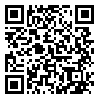BibTeX | RIS | EndNote | Medlars | ProCite | Reference Manager | RefWorks
Send citation to:
URL: http://jams.arakmu.ac.ir/article-1-6312-en.html
2- Department of Epidemiology, School of Public Health and Safety, Shahid Beheshti University of Medical Science, Tehran, Iran.
3- Department of Occupatonal Health and Safety Engineering, School of Public Health, Alborz University of Medical Science, Karaj, Iran.
4- Department of Occupational Health and Safety Engineering, School of Public Health and Safety, Shahid Beheshti University of Medical Science, Tehran, Iran. , jalalsaadi@yahoo.com
Extended Abstract
1. Introduction
2. Materials and Methods
The obtained data were analyzed in Spss v. 22. Quantitative variables were reported as mean and standard deviation and qualitative variables as a percentage. The Kolmogorov-Smirnov test was used to establish the normality of the data at a significance level of 0.05. Based on the collected results, parametric and non-parametric tests were selected. Independent Samples t-test, Mann-Whitney U test, one-way Analysis of Variance (ANOVA), as well as Kendall and Pearson correlation coefficient tests were used to compare melatonin levels in the case (operator, substation guards) and control (healthcare center staff) groups.
3. Results
4. Discussion and Conclusion
Ethical Considerations
Compliance with ethical guidelines
Funding
Authors' contributions
Conflicts of interest
Reference
-
Brzezinski A. Melatonin in humans. N Engl J Med. 1997; 336(3):186-95. [DOI:10.1056/NEJM199701163360306] [PMID]
-
Sokolovic D, Djordjevic B, Kocic G, Stoimenov TJ, Stanojkovic Z, Sokolovic DM, et al. The effects of melatonin on oxidative stress parameters and DNA fragmentation in testicular tissue of rats exposed to microwave radiation. Adv Clin Exp Med. 2015; 24(3):429-36. [DOI:10.17219/acem/43888] [PMID]
-
Michaelson SM. Health implications of exposure to radiofrequency/microwave energies. Br J Ind Med. 1982; 39(2):105-19. [DOI:10.1136/oem.39.2.105] [PMID] [PMCID]
-
Ohayon MM, Stolc V, Freund FT, Milesi C, Sullivan SS. The potential for impact of man-made super low and extremely low frequency electromagnetic fields on sleep. Sleep Med Rev. 2019; 47:28-38. [DOI:10.1016/j.smrv.2019.06.001] [PMID]
-
Ahlbom A. Neurodegenerative diseases,suicide and depressive symptoms in relation to EMF. Bioelectromagnetics. 2001; (S5):S132-43. [DOI:10.1002/1521-186X(2001)22:5+3.0.CO;2-V]
-
Carpenter DO. Human disease resulting from exposure to electromagnetic fields. Rev Environ Health. 2013; 28(4):159-72. [DOI:10.1515/reveh-2013-0016]
-
Sahraei H. [Induction of anger in rhesus monkeys using ELF waves at a frequency of 30 Hz (Persian)]. Paramed Sci Mil Health. 2019; 14(3):5-5. https://jps.ajaums.ac.ir/article-1-200-fa.html
-
Juutilainen J, Kumlin T. Occupational magnetic fieldexposure and melatonin: interaction with light-at-night. Bioelectromagnetics. 2006; 27(5):423-6. [DOI:10.1002/bem.20231] [PMID]
-
El-Helaly M, Abu-Hashem E. Oxidative stress, melatoninlevel, and sleep insufficiency among electronic equipmentrepairers. Indian J Occup Environ Med. 2010; 14(3):66-70. [DOI:10.4103/0019-5278.75692] [PMID] [PMCID]
-
Yousefi HA, Nasiri P. Psychological effect of occupational exposure to electromagnetic fields. J Res Health Sci. 2006; 6(1):18-21. http://journals.umsha.ac.ir/index.php/JRHS/article/view/303
-
Bagheri Hosseinabadi M, Khanjani N, Ebrahimi MH, Haji B, Abdolahfard M. The effect of chronic exposure to extremely low-frequency electromagnetic fields on sleep quality, stress, depression and anxiety. Electromagn Biol Med. 2019; 38(1):96-101. [DOI:10.1080/15368378.2018.1545665] [PMID]
-
Daryabari H, Bahramifar A, Morshedi M, Lotfi B. [Investigation of the relationship between exposures to electromagnetic waves with some clinical disorders in radar device users (Persian)]. J Mar Med. 2019; 1(1):18-23. [DOI:10.30491/1.1.18]
-
Bowman JD, Kelsh MA, Kaune WT. Manual for measuring occupational electric and magnetic fields exposures. U.S. Department of Health and Human Services, Public Health Service, Centers for Disease Control and Prevention, National Institute for Occupational Safety and Health, Division of Biomedical and Behavioral Sciences; 1998.
-
Ministry of Health and Medical Education.Electronic forms [Internet]. 2017 [Updated 2017]. Available from: http://thc.qums.ac.ir/Portal/home/?177041/%D9%81%D8%B1%D9%85-%D9%87%D8%A7%DB%8C-%D8%A7%D9%84%DA%A9%D8%AA%D8%B1%D9%88%D9%86%DB%8C%DA%A9%DB%8C
-
ACGIH. TLVs and BEIs based on the documentation of the threshold limit values for chemical substances and physical agents and biological exposure indices. Cincinnati: ACGIH Publication; 2007. https://www.amazon.com/TLVs-BEIs-2007-Documentation-Substances/dp/1882417690
-
International Commission on Non-Ionizing Radiation Protection. ICNIRP statement on the guidelines for limiting exposure to time-varying electric, magnetic and electromagnetic fields (up to 300 GHz). Health Phys. 2009; 97(3):257-8. [DOI:10.1097/HP.0b013e3181aff9db] [PMID]
-
Mohammadyan M, Alizadeh Larimi A, Gorgani M, Taghavi Soghondikolaei F. [measurment of electromagnetic field of minitors and electric posts in one of the oil product distribution company in mazandaran province (Persian)]. J res Environ Health. 2017; 3(2):150-7. [DOI: 10.22038/JREH.2017.25132.1166]
-
Hosseini SZ, Jalili Jahromi A, Malakootian MA. [Investigation and measurement of electric and magnetic fields In the vicinity of Tehran’s metropolitan high-power lines and substations (persian)]. Twenty-seventh International Conference on Electricity, 2012, Tehran, Iran. https://civilica.com/doc/178257/
-
Eskandari M.H., et al. [Examination of 380 and 800 microtesla electromagnetic fields effect on plasma cortisol hormone level and humural immunity in Balb/c mice (persian)]. Biol J. 2009; 4(2):9-18. https://www.sid.ir/en/journal/ViewPaper.aspx?ID=193443
-
Ghorbani F, Eshaghi M, Dehghanpor T, Karami Z. [Assessment of Extremely Low Frequency (ELF) electric and magnetic felds in Hamedan high electrical power stations and their effects on workers (persian)]. Iran J Med Phys. 2011; 8(3):61-71. https://www.sid.ir/fa/journal/ViewPaper.aspx?ID=149146
-
Mazurek PA, Naumchuk OM, Kot K, Wdowiak A, Zybała M. Exposure of high frequency electromagnetic fields in the living environment. EJMT. 2018; 4(21):33-9. http://www.medical-technologies.eu/upload/exposure_of_high_frequency_electromagnetic_fields_-_mazurek.pdf
-
Brainard GC, Kavet R, Kheifets LI. The relationship between electromagnetic field and light exposures to melatonin and breast cancer risk: A review of the relevant literature. J Pineal Res. 1999; 26(2):65-100. [DOI:10.1111/j.1600-079X.1999.tb00568.x] [PMID]
-
Dyche J, Anch AM, Fogler KA, Barnett DW, Thomas C. Effects of power frequency electromagnetic fields on melatonin and sleep in the rat. Emerg Health Threats J. 2012; 5(1):10904. [DOI:10.3402/ehtj.v5i0.10904] [PMID] [PMCID]
-
Manikonda PK, JagotaA A. Melatonin administration differentially affects age-induced alterations in daily rhythms of lipid peroxidation and antioxidant enzymes in male rat liver. Biogerontology. 2012; 13(5):511-24. [DOI:10.1007/s10522-012-9396-1] [PMID]
-
Farhud D ,Tahavorgar A. [Melatonin Hormone, Metabolism and its clinical effects: A review (Persian)]. Iran J Endocrinol Metab. 2013; 15(2):211-23. https://www.sid.ir/en/journal/ViewPaper.aspx?ID=339250
| Rights and permissions | |
 |
This work is licensed under a Creative Commons Attribution-NonCommercial 4.0 International License. |









